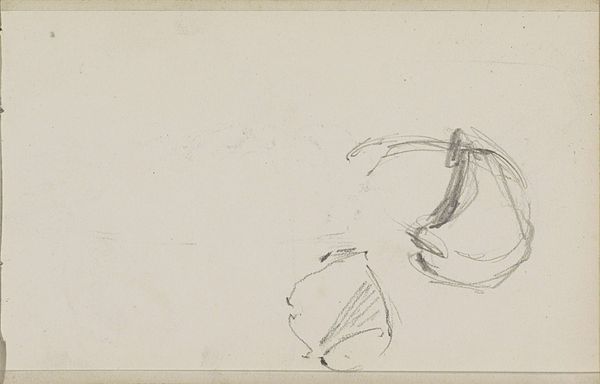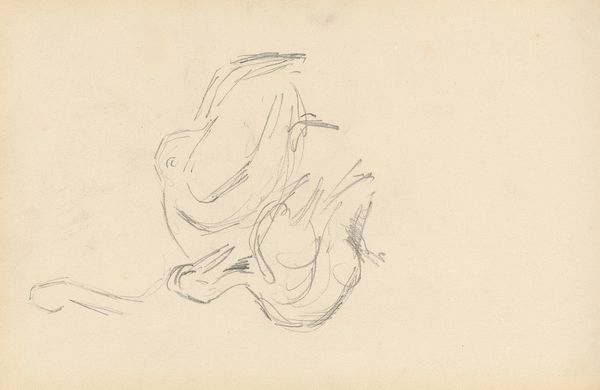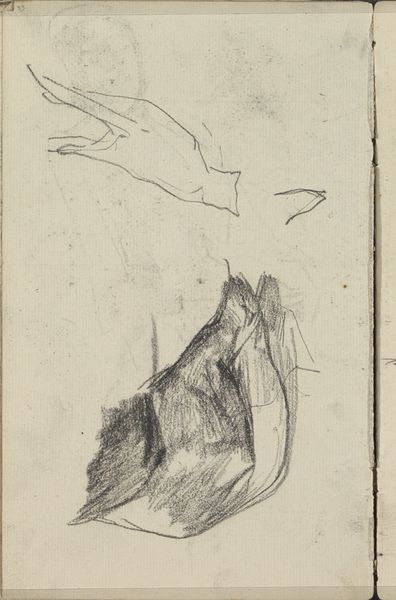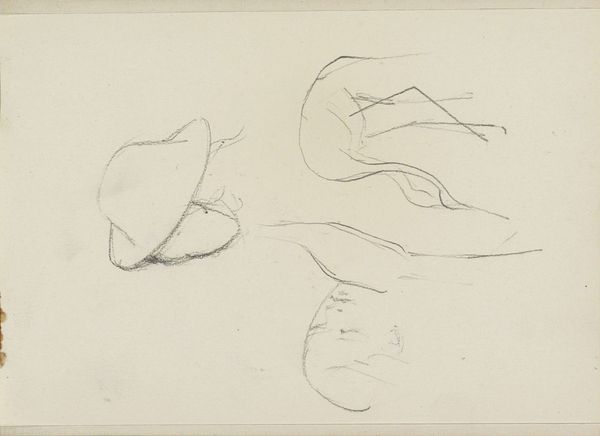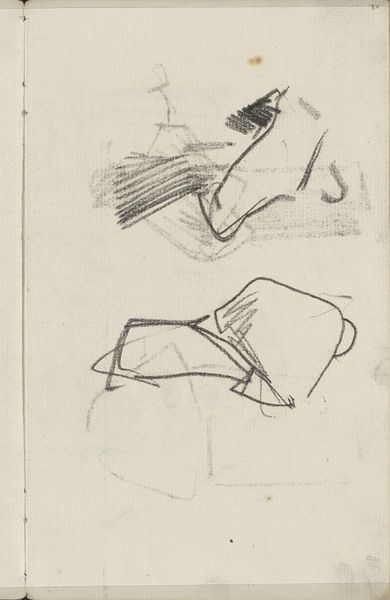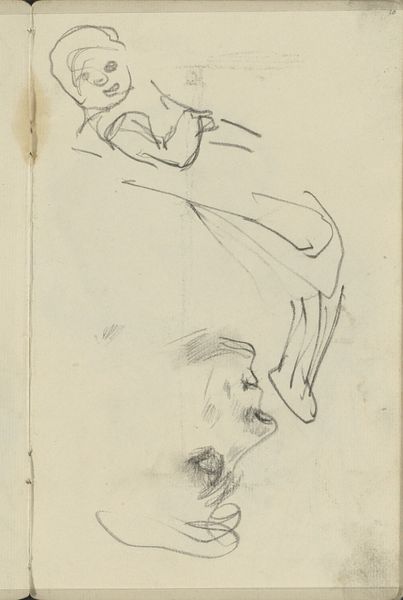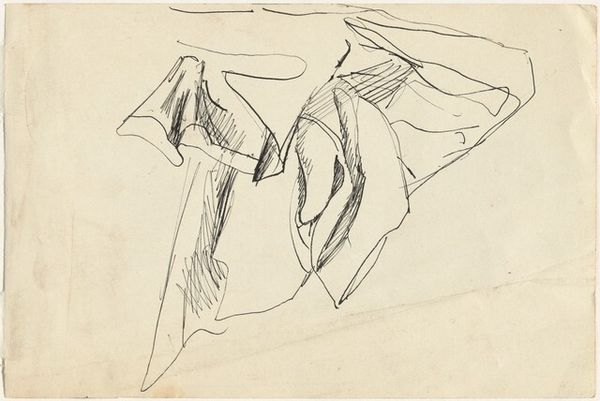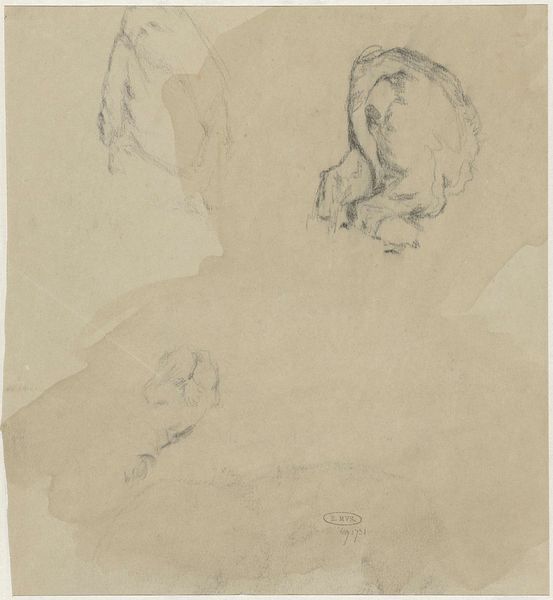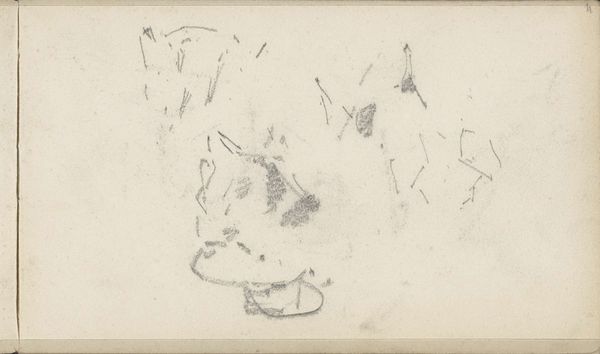
drawing, ink
#
portrait
#
drawing
#
imaginative character sketch
#
light pencil work
#
pen sketch
#
pencil sketch
#
figuration
#
personal sketchbook
#
ink
#
idea generation sketch
#
ink drawing experimentation
#
pen-ink sketch
#
line
#
sketchbook drawing
#
sketchbook art
Dimensions: height 206 mm, width 174 mm
Copyright: Rijks Museum: Open Domain
Editor: So, we're looking at "Sketches of a Cat" by Jan Veth, likely made sometime between 1874 and 1925, judging from the metadata. It's a pen and ink drawing on paper, and it has the quality of a quick study, something captured on the go. What do you see in this seemingly simple sketch? Curator: I see the raw labor of observation, a process laid bare. Veth isn't presenting a finished product, but a record of seeing. Look at the repetition of lines, the searching for form. Consider the accessibility of these materials – pen, ink, paper – readily available tools democratizing art creation. This elevates the status of the 'sketch,' usually relegated to the background, into something worthy of examination in itself. What does that tell us about how art was valued then? Editor: That's a good point! It does feel more like process than product. Do you think the apparent ease of the lines hides the skill involved, though? Someone could say, "I could do that!" Curator: Precisely! And that 'ease' is a manufactured effect, dependent on years of disciplined practice. Consider the social context: a rising middle class with increased leisure time engaging in sketching as a pastime. Veth, an established artist, is engaging with, but also elevating, a common practice. He makes a commodity out of seemingly nothing. Notice the different strokes used and consider their purpose in defining space and volume. Editor: I never thought about it in terms of accessibility and labor before. Curator: It is essential to recognize and account for how these dynamics influence artistic choices. By doing so, we challenge the perception of artistic genius as purely individual inspiration. This reveals how social practices intersect in what is often taken as rarefied creative thought and activity. Editor: I’ll definitely look at sketches differently from now on, keeping in mind the production and the intention of showing, rather than concealing, the act of creating! Curator: Yes, seeing the "Sketches of a Cat" reveals the artistry of practice. It's as simple—and as complex—as that.
Comments
No comments
Be the first to comment and join the conversation on the ultimate creative platform.
